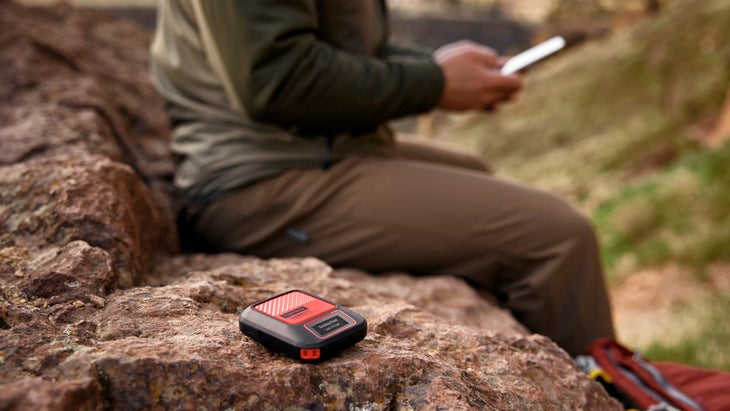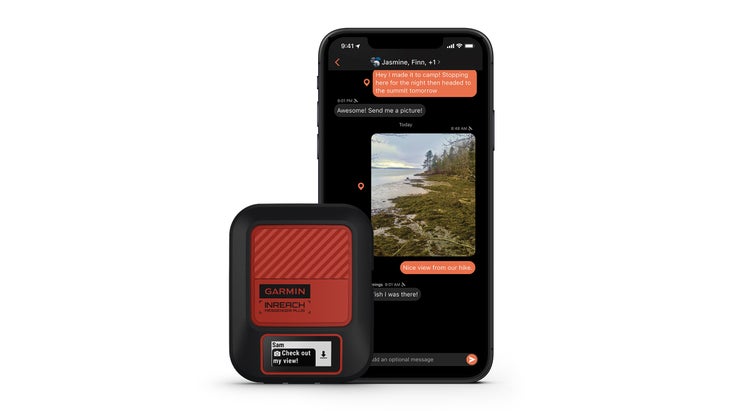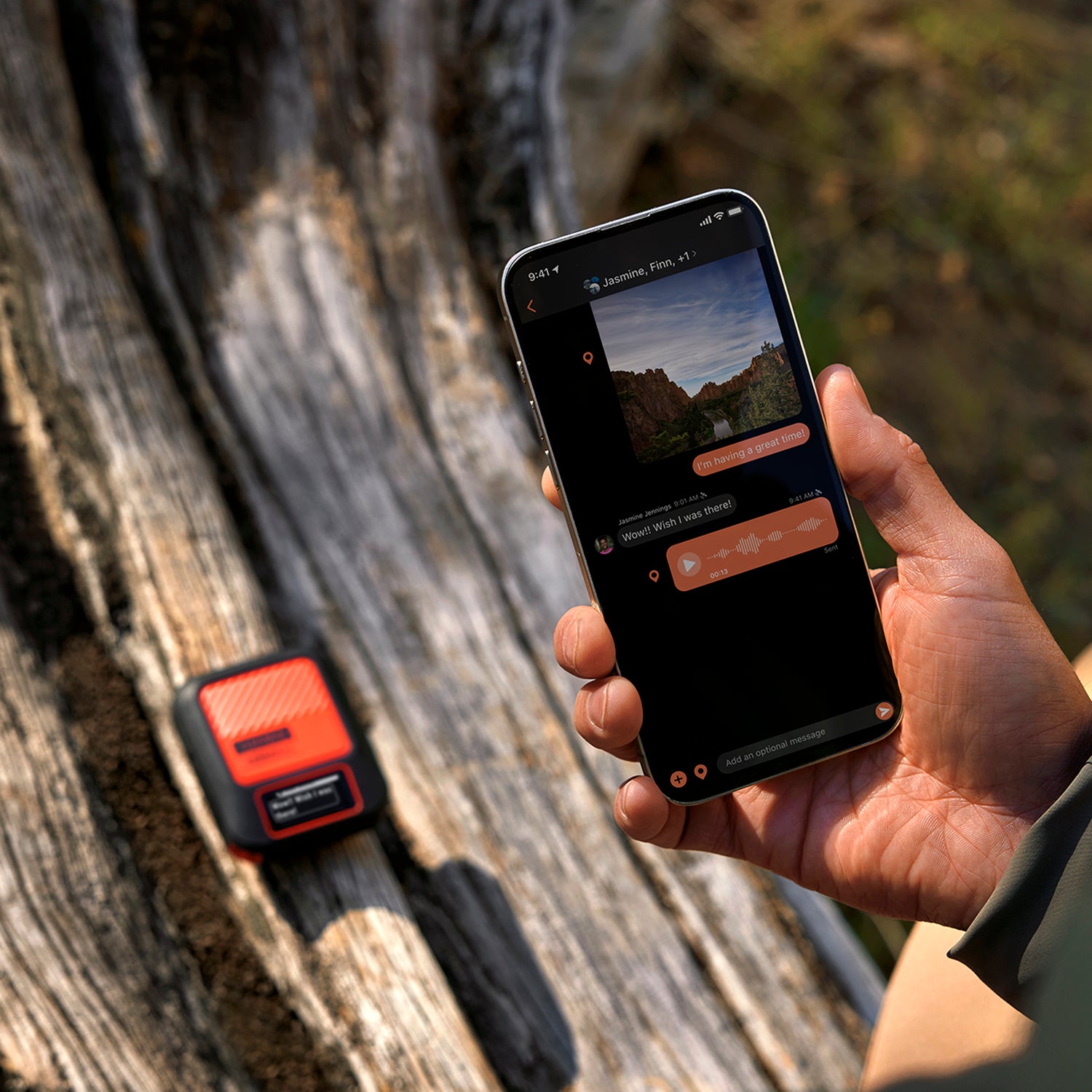Earlier this month I hiked Huron Peak outside of Buena Vista, Colorado. Huron is a 14,000-foot peak—and a relatively easy climb—so the trail was crowded, even in the early morning.
In addition to lots of hiking poles and Hoka shoes, the most common piece of gear I saw on the trail was a Garmin inReach hanging off of people’s packs. Hikers and all kinds of other adventurers have made these satellite communication devices standard carry because they’re small and lightweight, but will save your ass in an emergency. With the press of a button and a few satellite-assisted text messages, you can call in the cavalry (emergency responders, including search and rescue) if things go wrong.
Thanks to the Garmin Messenger app, you can also use your inReach to send and receive short (160-character) satellite text messages with friends and family. You have to pay for a subscription, but this feature is another way people call for help, or just stay in touch when they’re off the grid.
Given the inReach’s usefulness, I was excited to hear that the inReach Messenger just got a big update, announced this week, that increases its capability. With the —a new, puck-like device—users can now send and receive photos, voice messages, and much longer 1,600-character text messages. These messages can be exchanged with both Garmin emergency services and friends and family.

Users will now be able to send summit photos to family, hear their comforting voices, or tell them in a detailed text message that the user is running late and that they will be out of the woods at a specific time. As is the case with the current gen inReach Messenger, you’ll need a smartphone and the Messenger app to make it work. Those on the grid or others in the backcountry receiving and responding to the messages will also need to be using the Messenger app, and everything will appear for both users in a text-like chat thread.
Messenger Plus users will also be able to send photos and voice messages to Garmin Response, the company’s emergency nerve center for SOS dispatch efforts, when an SOS is triggered. This means an SOS can be more accurately accessed—a picture of an injury is worth a thousand words, and is far more valuable than 160 characters—and search teams will have as much information as possible when they head out for a rescue.
I reached out to Zack Kline, a long-time ���ϳԹ��� gear tester and member of the Albuquerque Mountain Rescue Council (Albuquerque’s local search and rescue team), for some perspective.
“Off the cuff, it’s huge to have more situational awareness about what the person is actually facing when it comes to where they are and what kind of problems they’ve encountered,” he said. “Oftentimes we don’t know how prepared they are and we only have a location, so we have to get there and then make a decision about how to help them medically and how to get them out, be that via helicopter or a trail carry.”

If you buy through our links, we may earn an affiliate commission. This supports our mission to get more people active and outside. Learn more.
Apple Enters the Competition
We’re not sure if Garmin’s timing on the release of the Messenger Plus is purely coincidental, or very targeted, but it comes just two days after Apple launched iOS 18, its new operating system for iPhones that also comes with increased satellite communication options. Apple says that thanks to the new software, the satellite capabilities on iPhone 14 or later will allow users to keep texting via satellite whenever they lose cell service. iPhone users will not, however, be able to send photos or voice messages via satellite and will still use the prescribed, text-based Emergency SOS via satellite workflow on the iPhone to contact a rescue agency.
Both companies know their new features will bring peace of mind for people traveling in the backcountry, but both have also spent a lot of time touting the features as general communication tools.
Current inReach users know texting over satellite is clunky and one message can take a while to go through. This made us worry that photos and voice memos would take forever, but Garmin says the Messenger Plus uses a different system called Iridium Messaging Transport (IMT) to exchange photos and voice memos (as well as text messages) and that IMT supports messages that are approximately 300 times larger. Garmin says photos and voice memos should go through in about one minute if the device has a clear view of the sky; something we’ll be testing as we get a unit.
Like all Garmin inReach devices, the Messenger Plus requires a subscription plan. For $15 you can send 10 photos and voice memos (that’s total, not 10 of each) per-month. For $30 you get 25 photos and voice memos, and for $50 you can send 50. Apple says texting via satellite will be free for two years after you buy any satellite-capable iPhone.
Should You Invest in the New inReach Messenger Plus?
We love that both Garmin and Apple are making big steps forward in satellite communication. Our assessment is that the iPhone is a great option for staying connected or triggering an SOS—for people who don’t play in the backcountry that often.
However, we’ve found out in our testing that you can’t send satellite messages unless the SOS option engages, which doesn’t happen if you have one or two unreliable bars, or if you’re in airplane mode. And, as many people have pointed out, the iPhone battery is the limiting factor for anyone who’s out in the backcountry for days or weeks at a time. Your phone lasts a couple days at best if you have the cell service turned off. The Messenger Plus has a battery that, according to Garmin, will last up to 600 hundred hours in low power mode and is capable of sending 250 photo and voice messages, which should be plenty, even in a complicated rescue scenario.
While the Messenger Plus works best with your smartphone, it can still send 1,600-character text messages by itself (with a limited keyboard) and trigger SOS services. Plus, you can use the Messenger Plus to charge your phone if necessary.
The Messenger Plus costs $500 and the subscription adds a monthly bill (the cheaper Messenger stays in the line as well). But many backcountry adventurers, like those I saw on my hike up Huron Peak, see their Garmin as a safety investment that’s just as important as a bike helmet or avalanche beacon. The hope is that the Messenger Plus doesn’t embolden people to take risks they otherwise wouldn’t, but instead keeps them in touch and comes in handy if there’s ever an emergency.


